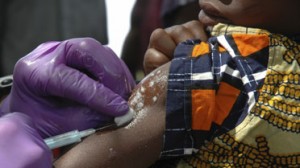 |
| Sean Warren, iStockphoto |
This doomsday scenario is one where routine infections which we have come to think of as treatable nuisances, are once again life threatening; where modern medical procedures such as cancer treatment and surgery, threaten patient’s lives by leaving them vulnerable to untreatable infections instead of extending and improving lives. This is scary stuff. And scarier still is the fact that most agree it is not scaremongering. Indeed, it is already happening. The European Centre for Disease Prevention and Control looked at five well known antibiotic resistant bacteria and estimated that they alone caused 25,000 deaths a year in Europe.
Today Mr Cameron announced an independent review into how to tackle the global resistance problem; as penicillin was a British invention, it was fitting, he said, that Britain should now provide leadership. He defined the challenge as consisting of three elements: evolving resistance, the lack of development of new antibiotics and the over use of existing antibiotics.
The first is an unavoidable process, due to natural selection, which can be influenced but not stopped. On this, the focus on drugs should not detract from the importance of sanitation and infection control; one way to influence the development of resistance is to influence the rate of infection. Worryingly, there are currently huge gaps in what we know about the levels of resistance around the world.
The second element is tricky too. The golden age of drug production is long gone and getting effective drugs to market is expensive and uncertain. Pharmaceutical companies argue that they face limited returns on their investment as not only are antibiotics poor money-spinners (being short-course and low cost treatments), but it is likely that sales of new drugs will be restricted as governments try to regulate their use more strictly. Still, new business models for research and development are plausible and already being negotiated.
The third element, drug use, is potentially the most complex and challenging of all. Inappropriate drug use is a problem the world over and key will be finding ways to regulate the consumption of medicine. Any British leadership on this issue must consider that, in contrast to the highly regulated NHS or European health system models, people in many Low and Middle Income Countries (LMICs) access healthcare through disorganised and unregulated markets, with the poor in particular relying on informal providers.
In these markets the use of antibiotics is rife, with the World Health Organisation (WHO) reporting they account for 40- 50% of prescriptions. Stopping ‘irrational’ and ‘inappropriate’ use of antibiotics is a common refrain. Yet these labels detract from the many risks and uncertainties which people and healthcare providers weigh up when deciding on treatment, often in the absence of diagnostics. Faced with high and dangerous disease burdens, and with limited access to good quality health services and products, using these medicines presumptively is understandable, and at times beneficial. Indeed it was not long ago that the WHO was recommending presumptive treatment of malaria in endemic regions.
The crux of the issue is the access/excess balance. How can you regulate in a way which ensures essential medicines are available when needed, but are not overused so that they become ineffective? This also involves a trade off between individual and societal needs. The availability of cheap generic drugs to hard to reach populations through informal channels has undoubtedly reduced morbidity. It has been suggested that the impressive reductions in child and maternal mortality in Bangladesh can be attributed to increased access to antibiotics to fight infections. Top down responses such as tightly restricting the availability of antibiotics, to only formal providers for instance (if that was even possible), may adversely affect the poor and vulnerable who face barriers accessing such services. As such they may also work against key development goals like reducing maternal mortality or achieving universal health coverage.
Work by colleagues in the STEPS Centre has highlighted the ways in which regulation must be appropriate for local realities. The informal sector is both problematic and potentially a life line. Attempts to ensure access and also limit antibiotic resistance must take the significant role they play in health systems into account. At the Institute of Development Studies we are partnering with organisations in LMICs who have longstanding relationships with these informal health providers in order to understand the local contexts of drug use more fully.
By Annie Wilkinson, post doctorate researcher, IDS
